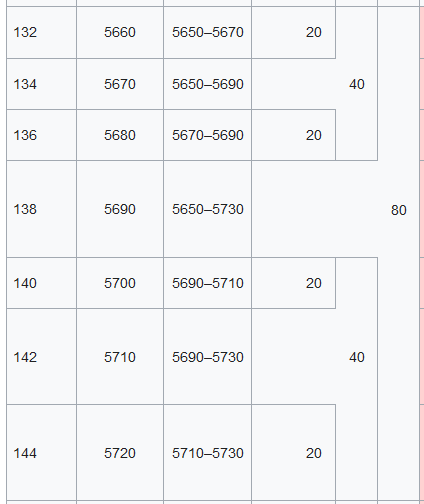We are used to think on a “set it and forget it” base, thus can be hard find some problems.
A customers of mine had some strange problems in reliability of a radio link that worked perfectly for the past 10 years and also for the past 2, when we substituted the two antennas, one after a lightning, the other for another fault.
There were sudden packet drops, glitches on voip communications and a general slowdown of the link.
After some little retouching of tx power, checking the SNR, I decided to have a site survey from each antenna and, even if 5ghz channels have no overlap, I realized that some of the networks had 20, 40 and even 80 Mhz of bandwidth and so I searched a schema of the overlapping and permitted channels, that I found on wikipedia.
The tricky part was to find a channel I can use with the maximum bandwidth, considering the channels it would overlap on lower bandwidth, both sides. It is a long, long work, but, believe me, it will solve any issue in stability and performance.
–EDIT–
A friend of mine said that is not clear what I wrote, especially the second part, so I will make an example.

Let’s try to imagine I want to use an 80 MHz channel width to use the full bandwidth of my radio link. I have to use (in example but you can find this entire schema on the Wikipedia link above) the channel 138 and I have to be sure that also 132, 134, 136, 140, 142 and 144 channels are not used in any of the base stations that can be received on both sides of the point to point link. Also I can use 20 MHz bandwidth on each channel shown but I have to ensure that the channel is not busy from a wider bandwidth channel as shown on the schema. I mean, I can use 20 MHz bandwidth on each channel but I have to ensure, in example, that the next channel is not using 40 MHz of bandwidth or more.
The problem is, in the specific situation I managed for the customer of mine, I only had to choose between 1 single possibility or to use less bandwidth.